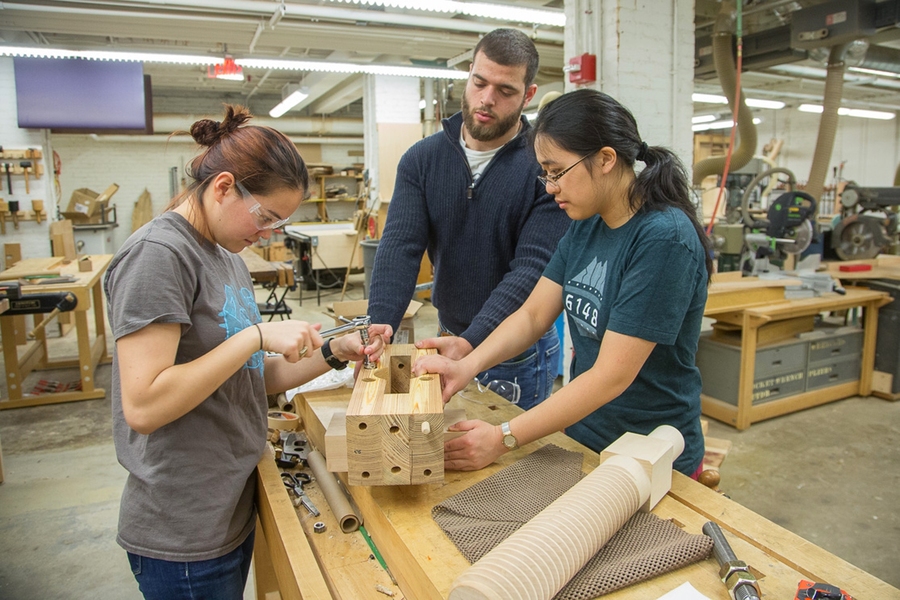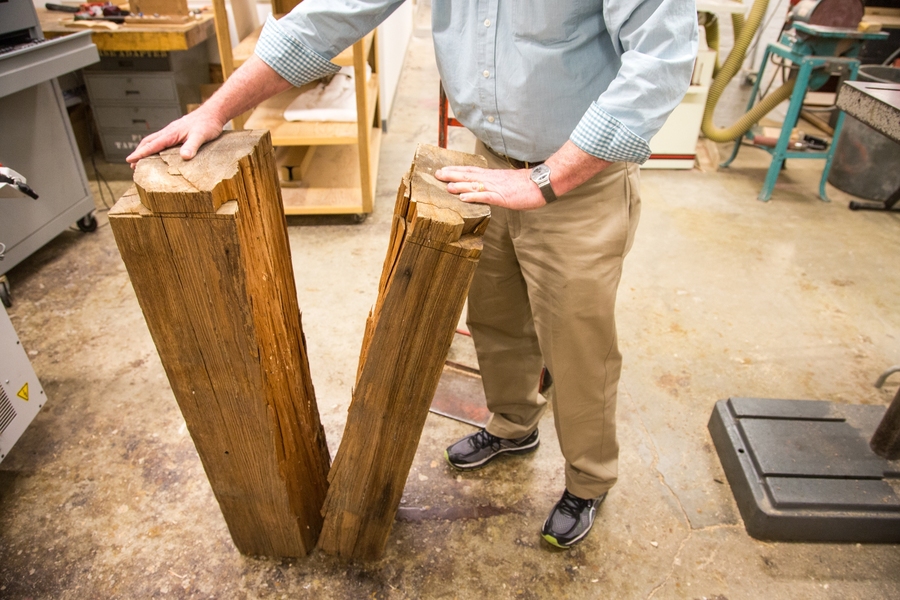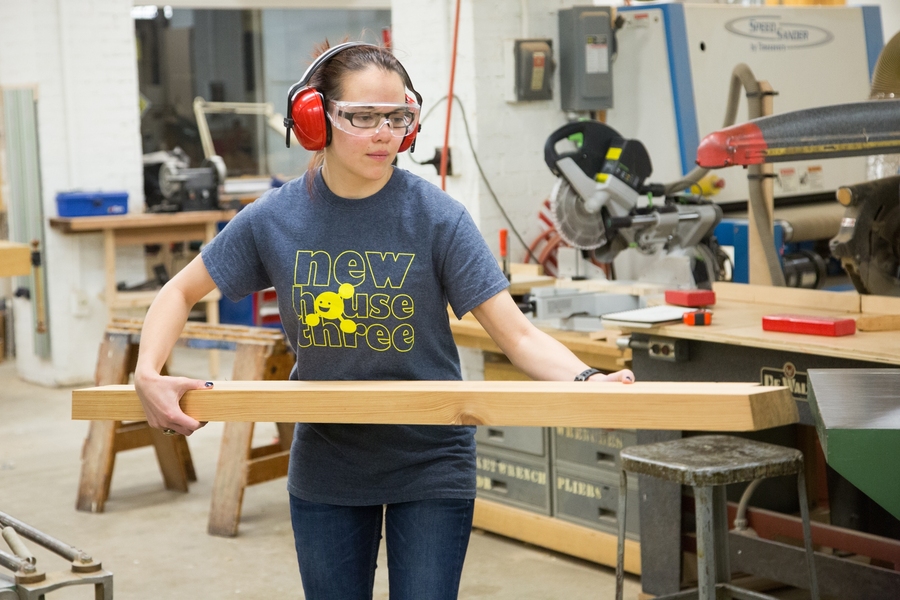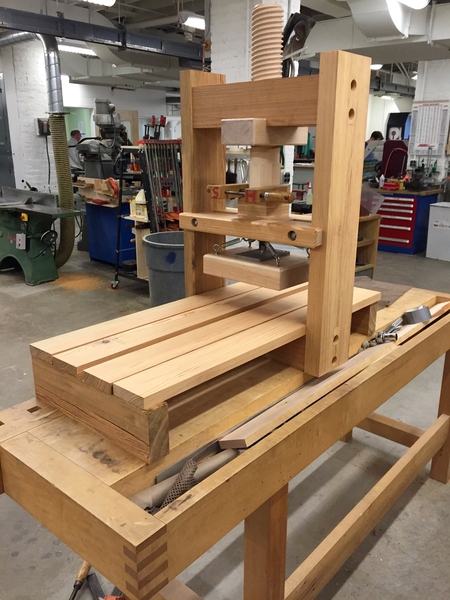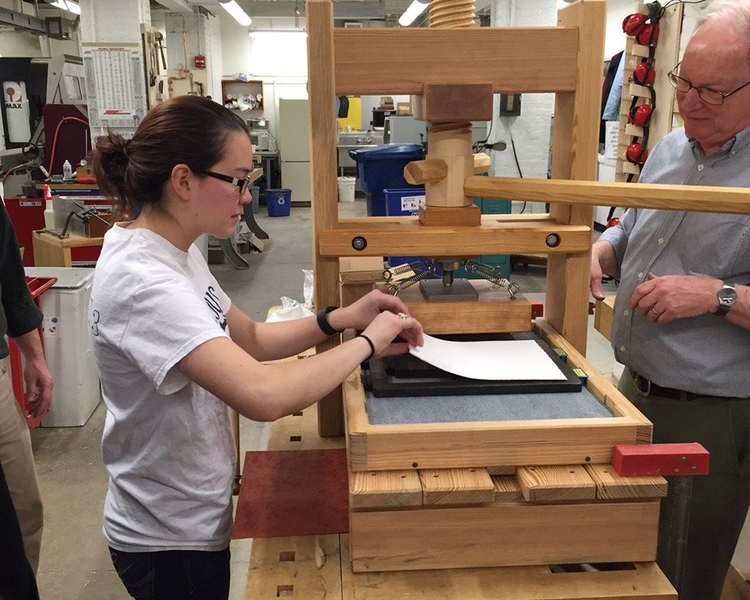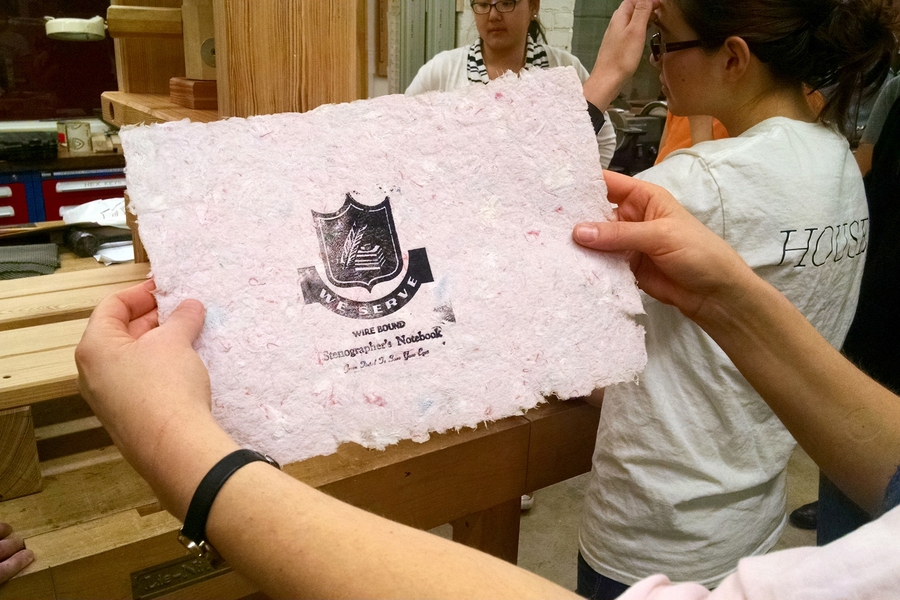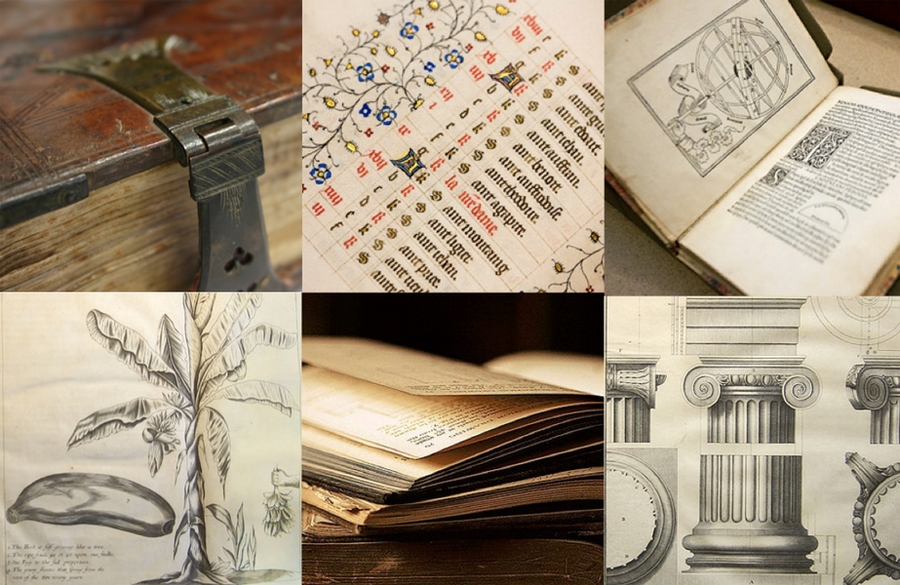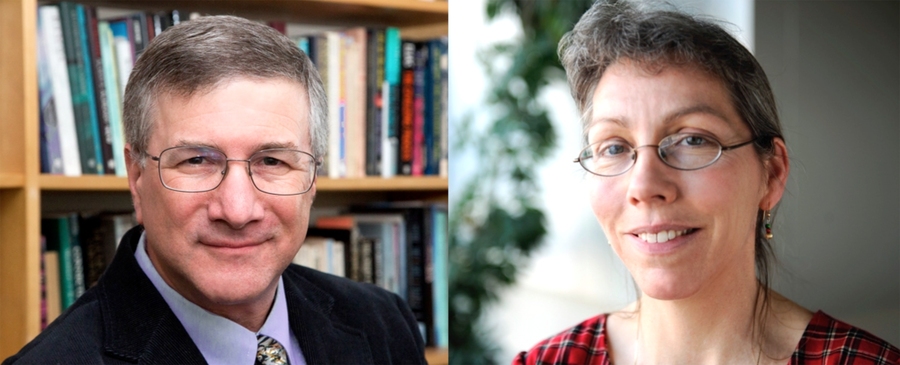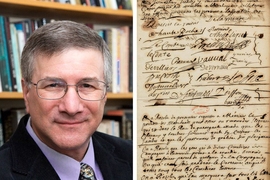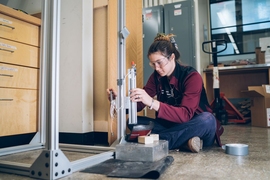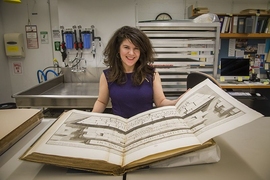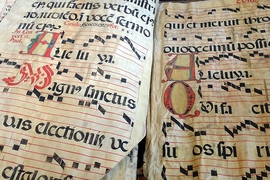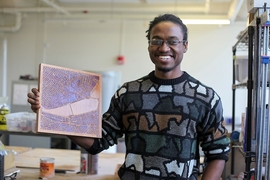A group of MIT students briefly put away their cellphones this spring to concentrate on a much older information storage and retrieval device: the book.
In a hands-on humanities class — 21H.343 (Making Books: The Renaissance and Today) — students gained insights about early books and book-making technology, not least by actually making paper and building a handset printing press, the kind of press on which the great documents of the Renaissance, the Reformation, and the Scientific Revolution were printed.
MIT historian Anne McCants, who co-taught the class with Jeffrey Ravel, head of the MIT History section, says, "One of the values of making something that seems prosaic, especially something that is now as common as paper, is learning that we moderns are not the only clever ones. People in the past were clever too, and they also knew some things we don't."
"Most of us are now divorced from the process of making the things we use," she explains. "We wear textiles every day but only a few specialists now understand how fibers are made and combined. In the 15th century, however, nearly everyone lived in close proximity to textile makers, and the essential properties of fibers and construction processes were familiar to the general population. That kind of familiarity is very important for being able to innovate with materials."
The power of the past
“More and more, the students who come to MIT have interests that are beyond the lab, beyond the virtual world," says Ravel, "and are able to engage with some of the deepest and most profound questions in humanistic study.”
Reflecting on her discoveries in the history class, rising senior Kathryn Hendrickson, a computer science major, says: "There's a common misconception that there was a single printing revolution" at the time of the 15th century printing of the Bible by Johannes Gutenberg. But this was not in itself a singular turning point in human history, Hendrickson explains.
Rather, Gutenberg's printing was representative of a broadly based transition from a society in which knowledge was controlled by the few to one in which information became increasingly accessible to a wider population. Hendrickson adds, "I also learned that printing is much more complicated than I had realized!"
Another student in the class, Tasha Schoenstein '16, a mathematics and computer science major, says, “MIT students have an interest in preserving good forms of older technology and not just moving forward without looking back at what was good about the past. And being able to engage with history in the same way is really powerful.”
Making the press
"I really enjoy the fact that this course has been 50-50; we spent 50 percent of the time exploring ideas and 50 percent building the press in the Hobby Shop," says Theodore Mouratidis '16, a double major in physics and aeronautics and astronautics. With such a ratio, the class truly embodied MIT's motto: "mens et manus," or "mind and hand."
Ken Stone, director of the MIT Hobby Shop, led the building project, giving the students a crash course in workworking. Under his direction, the students started work on the press by milling down a huge beam taken from an old building. They planed the wood, chamfered its edges, and smoothed the surfaces to eliminate chipping.
Then they measured and cut boards for the bed, platen, and upright supports (or cheeks) of the press. Finally they assembled the pieces, creating the type of screw-type letterpress printer used throughout the early modern period.
The students were also involved in designing the press. Ken Stone says, "That enabled them to develop a working understanding of how functional requirements inform design. The design can draw on details from previous presses and the designers' knowledge but needs to be adapted to the materials, equipment, and experience of the builders."
"We got to learn how to use saws, a drill press, and other machines. It was cool to make something physical, where I'm used to just code," says Henrickson, who is majoring in computer science and engineering. "Building a printing press is awesome."
During the course of the project, students also toured Edes and Gill, a Colonial-style print shop in Boston, where they examined a handset press similar to the one they were building, and talked with print master Gary Gregory.
"Once the press was completed," Stone says, "the students had the chance to try printing for themselves — to see what worked and what didn't, and to experiment. This firsthand knowledge of the physical reality of letterset printing gave the students a much greater understanding and appreciation of its history."
In addition to the press, students also made paper — deconstructing rags, creating a pulp, and then screen-molding sheets out of the pulp in a weeks-long process. "Paper-making is one of the origins of modern chemistry," McCants says. "And when you experience just how labor-intensive Rennaisance-era paper-making was, you can easily envision people thinking 'there must be a chemical solution to this.'"
Changing media
In the classroom, the 21H.343 students explored such questions as: What is a book? Are there parallels between the world of print in the early modern period and today's rapidly changing media landscape?
"We asked the students to challenge their assumptions about media, politics, and science today by probing the parallels with this earlier period," Ravel says. "We studied early printed Bibles and other religious texts in several languages to understand how print launched the Protestant Reformation at the same time that it reinforced Roman Catholic doctrine. We then drew a parallel to the multiple uses of social media today for progressive and conservative causes."
The class also considered the question of whether the book is dying — a subject of much discussion in recent years as some argue that digitization and various forms of electronic media will render printed text obsolete.
Students examined theoretical claims for and against the demise of the book, supplemented by a historical perspective, including an examination of older texts, printing technologies, and reading communities from 1450 to the present. They examined works in MIT’s Rare Books collection, and also studied maps, engravings and other printed images from the 1550-1700 period in the collections of the MIT Museum.
Making the connection
Ultimately, the class engaged students in parsing the complex relationships between technological change and social evolution, and in envisioning other human realities.
"Cultural traditions did not change instantly with the emergence of the printing press," Ravel notes. "Just as in today's media, one technology does not immediately supplant another. For example, we compared late medieval manuscripts in MIT’s Rare Books Collection with early printed books to understand the continuities in content and formatting between the two book forms. Print did not instantly eclipse scribal book production, just as digital texts co-exist with printed books in today’s media landscape.”
"The past is an excellent laboratory from which to learn things about humanity and human systems," McCants says. "A history class like this at MIT helps to foster a deeper empathy in our students for people not like themselves, people whose world-view and opportunity space were quite different from our own. This empathy and broader perspective is an essential quality for doing great 21st century science and engineering — unless you only want to make artifacts or develop processes that are going to be used by people exactly like yourself."
